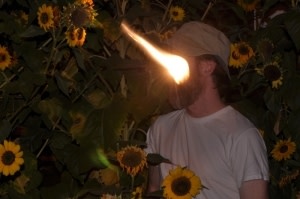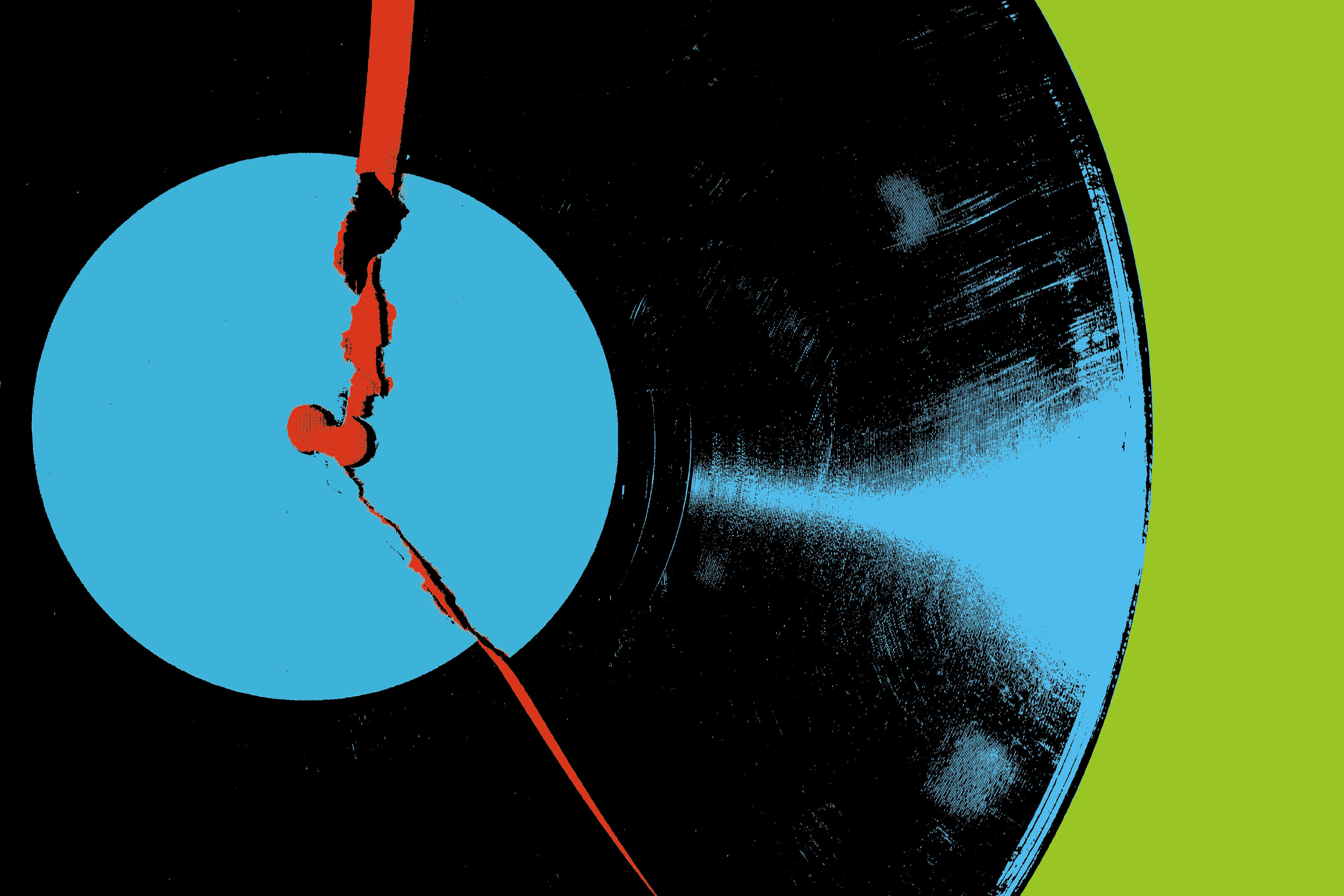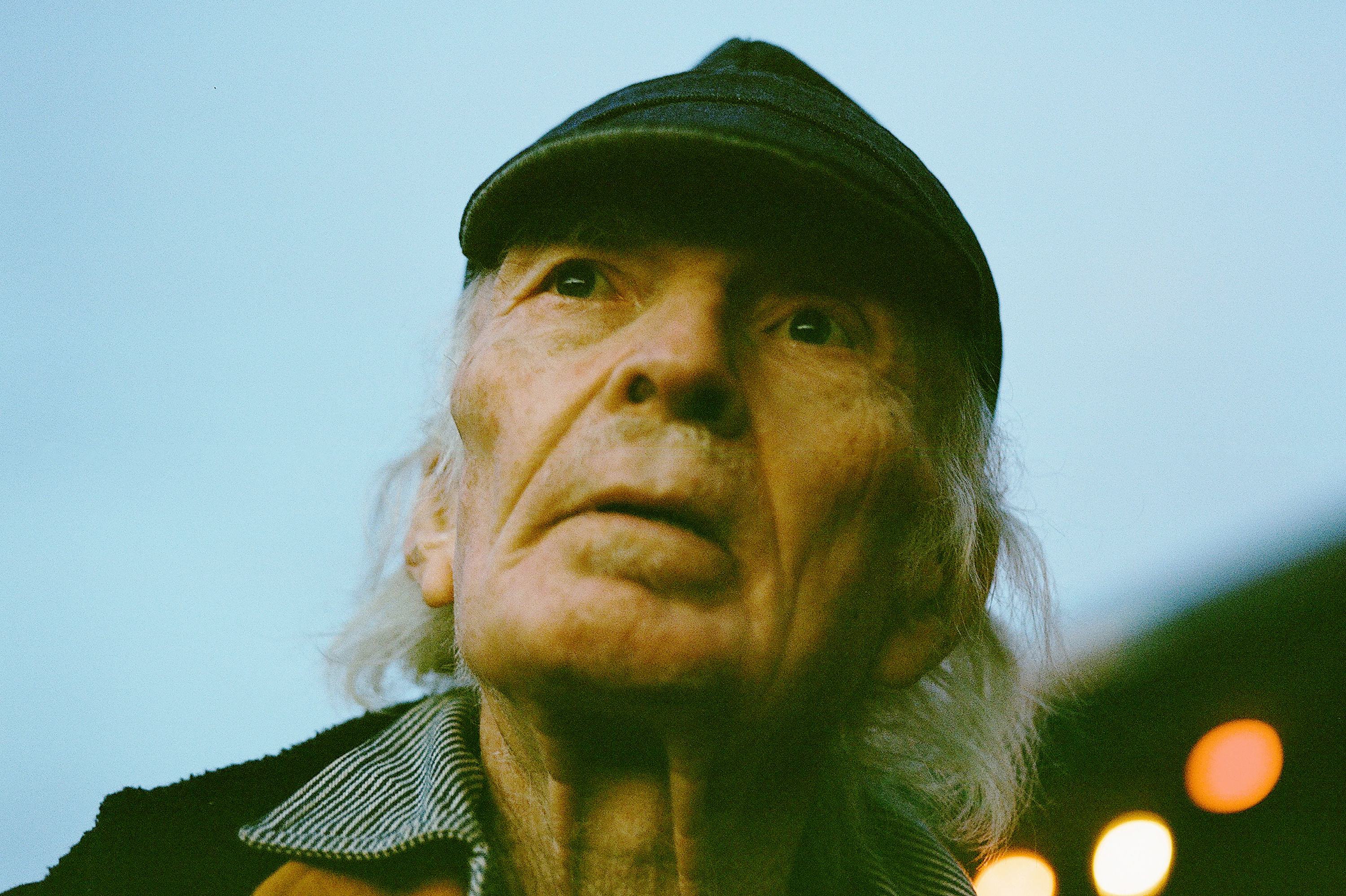Jay Clarke’s Instrumental Impulses

Jay Clarke’s press photo—like his mysterious music—leaves plenty to the imagination.
UPDATE: We’ve just learned that Jay’s music is included in Erin Leddy’s award-winning My Mind Is Like an Open Meadow, just reprised at the 1 Festival, a solo artist showcase coordinated by July’s magazine featuree Mizu Desierto. (Small world.)
The Culturephile promo pile—an ever-growing and periodically reshuffled mound of CD’s, books and postcards—sometimes yields a rare treasure. This was certainly the case with Ash Black Bufflo’s Andasol. Mysterious, moving, and worthy of several spins, this album compelled us to learn more about its origins. Luckily, local musician and mad studio scientist Jay Clarke expresses himself almost as well in words as he does in his resplendent soundscapes, so we’ll go ahead and let him explain.
What are some things that Andasol sounds like? Not in terms of band or genre names, but in terms of atmospheric noises.
Lots of stuff! I’ll go back a bit though….when I started recording the album, I had no great plan, so I settled on the idea of using everything—even things that were a bit nasty or destructive in my personality or past. One of the first tracks I did was a song my wife sang called “Summer Night with Silverware” that sounded a lot like what my great-grandmother sang on her porch in Kentucky (no running water, no electricity etc…). I added a field recording of crickets from that area, and it all came together after that. I realized at that point that I wasn’t going to make an album of songs, but of what it felt like to be in certain parts of the country—and to be honest, a damaged country.
That said, there are a lot of things that Andasol sounds like—the aforementioned crickets at night, the city din, crowds, footsteps in snow, car radios, some laughing girls, a bit of Finnish counting, my wife speaking Spanish, old how-to language tapes, a street performer…. Listed out like this, it reads like the bad abstract poetry I wrote in college—but hopefully it all makes sense in context. I’m not really impressed with field recordings on an album; you hear that a lot. But if it serves the purpose of the song, then I think you can use whatever you need.
This album is a soundtrack, right? How did that collaboration come about? Were you able to see the footage and use it as inspiration to create the music, or not?
Well, that’s not necessarily true. I scored a documentary called Marwencol and a song from Andasol is in the movie for a bit, but everything else on the album stands on its own. There’ve been a few reviews that have said they didn’t like the album until they saw the movie, at which point they really enjoyed Andasol because they could match up the music with the film. Unfortunately, that’s a bit of brain trickery on their part. And yet, Marwencol had a big effect on the album, for sure.
The short genesis story is, I did a documentary called Red, White Black and Blue awhile ago. Jeff Malmberg, future director of Marwencol, edited that movie. I was on tour in Los Angeles and saw him not long after RWBB and we started talking about what he was up to. He started to tell me Mark’s story and about Marwencol, and halfway through I told him that I’d do the score for free (though he ended up paying me out of his own pocket). That was that, really. Over the next four years I sent him about 150 tracks, and the majority of the movie was cut to that music. I scored to film later in the process, but I’d say 80% of the movie was cut to the music I sent along the way.
{% display:image for:post image:1 align:right width:250 %}
Can you give a brief account of your band resumé? What bands have you been in, and roughly when?
I was in the Standard from 1999 to 2006 or so, and we never broke up, just stopped. When the dollar amount is right, we’ll re-form and tour the world! Dolorean since 2000, Holy Sons for the last two years, Grails for about the last year and a half. In there are too many other bands to count for single shows or six-month jaunts, where I wasn’t in the band necessarily, but acted as an honorary member to help out friends and get free beer.
You recorded Andasol mostly on your own, right?
That’s right, I did it on my own—though my wife, who is a very good violinist, played a huge role.
What sort of headspace were you in?
It took about five years to complete, so I was in just about every possible headspace you can imagine. I think the primary headspace was what you might call “roiling abject failure,” if that’s a headspace, punctuated by moments of real joy. There is no greater fun than living inside your own world: moving the trees around, picking up the train station and moving it south of town, annihilating the town drunk in a car accident….It is a world of your making so the responsibility lies on your shoulders. At the end of the day, it’s your baby—or your town drunk, if you will. The problem arises when you realize that other people will be critiquing the hell out of your town drunk, so you better make sure his breath smells of the cheapest wine and his clothes are shabby in all the right places.
How many hours do you think you spent, over those years?
In those five years, I really couldn’t say how many hours I spent. A lot.
How many different instruments are incorporated in your album, and what’s the largest number of simultaneous tracks in a single song?
It’s hard to say—some stuff is actually sampled note by note, laid out on a keyboard and then played that way. It would be faster to just learn how to play the banjo, but I figured it made for more interesting sounds if I stuck a pencil under the strings and sampled that and screwed with it a bit. There’s an urban legend that Paul Bowles told his novelist wife Jane to just “use the hammer and nails of fictional technique,” to which she replied, “but I have to make my own hammer and nails.” I can identify with that brand of masochism.
Explain a little more about the mystic/composer Joaquim Laakso-Risti. How did you come across his work, and what aspects of your album were inspired by it?
This is a bit of a touchy subject. I have to tread lightly for copyright reasons, incredibly enough, but my wife and I spend a good amount of time in Taos, NM and came across Laakso-Risti there—actually in a town outside of Taos in the Sangre de Cristo mountains. Long dead now, but he travelled in the Southwest quite a bit in the 1940s, spreading the gospel of community music-making. He’d go into a town, get the people instruments (or invite them to make their own) and then they’d adapt some of his own music so that everyone could play a part, and I mean everyone. It can be a bit hard to listen to sometimes (Laakso-Risti’s neo-romantic tics can make your eyes squirm), but gradually an amazing process takes over where the community begins to right itself and, flat notes and tempo problems galore, they start making this very beautiful, hive-mind music. Folks that know Laakso-Risti’s philosophies can speak more to this phenomenon, but it inspired me to make music that was rough around the edges, more community-minded though from a singular place, eccentric-sounding maybe. I’d say three songs on the album are directly linked to his work. However, the music on Andasol is in no way lifted from Laakso-Risti’s folk operas (what he brought into these small towns to play) but is instead inspired by them, their intentions and their spirit. If you think this sounds like lawyer-speak, you’re damn right.
What, in your opinion, are some advantages of making or listening to instrumental music over pop songs with words?
First, if I could write songs with lyrics and singing, I would. It’s a more direct way of making your point. That said, the advantage of making and listening to instrumental music is that (to totally mangle Emily Dickinson’s fine phrase) it “tells it better slant.” There’s enough gap for one’s meaning to be a little bit more slippery in purely instrumental music.
Say I want to write a pop song about a developmentally disabled man who is walking through the snow and somehow becomes a part of the cosmic whole (and therefore saintly) by his mere existing. Well, I’d need to have the right words and the right voice to get that across, and to be honest, I don’t have those words and I certainly don’t have that voice. If I want to do this same thing in an instrumental, I have heavy steps in snow, the sound of my wife and her niece singing and harmonizing what sounds like the word NO, church bells, a distorted guitar feeding back, heavy breathing and a big portentous title like “Greatness Strikes Where it Pleases,” and then it’s up to you to fill in the gaps. I’m not so delusional that I think someone will listen to the track and say “Hey, that sounds like a mute achieving sainthood,” but that’s the point: I don’t think you need everything laid out in front of you. Those sounds add up to what I’m shooting for, and for the purpose of that song, maybe it is even more what I’m shooting for than if I had lyrics. I’m not totally sure. Sometimes I give myself the puzzle of writing lyrics to the ideas of some of these songs, and it ends up making me laugh. I wouldn’t want to know me if I made that album.
How did you choose the few words that are included in the album, and what do they mean to you?
Great question, because it all matters in the end though it might not to the listener. The stuff that’s chosen is purposefully mundane in spots. In order to make room for the music, some words end up as instruments. I’m not so married to how deep they are. In some tracks, the words carry the entire load and lay out the album’s intentions. I love hip-hop albums that start off with a spoken track that lays out what is about to happen: “I’m a bad mother,” “I’m about to destroy”…I like the confidence in that. The problem for me is that even though you use the language and the subjects of your life, you can’t go home again. That place and time is a kind of hell, and yet, it’s your hell. So use hell, just make it interesting. Andasol ended up a being a way to lie about things that actually happened—it’s my life, but it has nothing to do with me.
Lastly, the counting in “Finnish” halfway through “Go ’way Old Ghosts” is for my wife, who is half-Finnish and who has saved my life, so you ask me what the words mean to me—that little nod to her means everything.
For more about Portland arts events, visit PoMo’s Arts & Entertainment Calendar, stream content with an RSS feed, or sign up for our weekly On The Town Newsletter!




